The Role of Herbal Tea in Relaxation
How Nature’s Brews Calm the Mind and Body
There’s something sacred about the moment you hold a warm cup of tea — the gentle steam, the earthy scent, the soft quiet it creates in both body and mind.
For centuries, herbal teas have been used across cultures not just as beverages, but as rituals of healing and relaxation. Whether it’s chamomile before bed, peppermint for digestion, or lavender for calm, these botanical blends offer a natural way to unwind in a world that rarely pauses.
But herbal teas are more than cozy comfort. Modern science shows that their bioactive compounds can influence neurotransmitters, lower cortisol, and activate the body’s parasympathetic (“rest and digest”) system — creating measurable effects on stress, anxiety, and sleep.
In this in-depth guide, we’ll explore how herbal tea supports relaxation, which ingredients are most effective, and how to create calming rituals that restore balance to your nervous system. 🌿
Looking for supplements for This? Click here.
🌸 Why Herbal Tea Helps You Relax
Unlike stimulants such as coffee or energy drinks, herbal teas are caffeine-free and rich in phytochemicals that help calm the mind and body.
Most relaxation teas contain compounds that:
Increase GABA activity (the brain’s calming neurotransmitter)
Reduce cortisol (stress hormone)
Relax smooth muscle tissue (soothing tension)
Improve sleep onset and quality
Support digestion, which is closely linked to emotional regulation
When you drink herbal tea, you’re not just hydrating — you’re signaling your body to shift from alertness to rest.
💬 Think of it as a physiological “exhale.”
🧠 The Mind-Body Connection of Tea Rituals

The power of herbal tea isn’t just chemical — it’s ritualistic.
The simple acts of boiling water, inhaling aroma, and sipping slowly tell your brain:
“We’re safe. We can slow down now.”
These sensory signals — warmth, scent, rhythm — activate the vagus nerve, which governs parasympathetic (rest-and-digest) functions.
☕ The Science of Ritual Calm
Temperature: Warm liquids increase blood flow and muscle relaxation.
Aroma: Essential oils in herbs stimulate the limbic system — the emotional brain.
Mindfulness: The repetitive nature of tea-making encourages presence, reducing rumination and worry.
✨ Drinking herbal tea is meditation disguised as a beverage.
🌿 The Best Herbal Teas for Relaxation
Let’s explore the top herbs known for their soothing effects — and the science behind their magic.
🌼 Chamomile: The Classic Sleep Companion
Chamomile (Matricaria chamomilla) is one of the most widely used herbal teas for relaxation.
Active compound: Apigenin — a flavonoid that binds to GABA receptors, promoting calm and reducing insomnia.
Benefits:
Decreases anxiety and irritability
Improves sleep latency (time to fall asleep)
Eases muscle spasms and tension headaches
🧠 Study highlight: A 2016 Journal of Advanced Nursing study found postpartum women who drank chamomile tea daily experienced significantly better sleep and less depression.
💡 How to use: Steep 1–2 tsp dried flowers in hot water for 10–15 min before bed.
💜 Lavender: The Aromatic Stress Reliever
Lavender (Lavandula angustifolia) isn’t just for aromatherapy — its tea form is equally effective.
Active compounds: Linalool and linalyl acetate, both of which enhance GABA signaling and lower cortisol.
Benefits:
Reduces anxiety and restlessness
Supports deeper, more restful sleep
Relieves tension headaches
🧠 Clinical insight: A 2015 Frontiers in Behavioral Neuroscience review found that lavender oil (and tea) produces effects similar to low-dose anti-anxiety medication, but naturally.
💡 How to use: Steep 1 tsp dried lavender buds in hot water for 8–10 minutes. Combine with chamomile for extra calm.
🌿 Lemon Balm: The Gentle Mood Stabilizer
Lemon balm (Melissa officinalis) is part of the mint family and is known for its uplifting yet soothing effects.
Active compounds: Rosmarinic acid and terpenes that modulate GABA and serotonin activity.
Benefits:
Reduces anxiety and restlessness
Improves concentration and calm focus
Supports digestion and nervous tension
🧠 Research insight: A 2014 Nutrients study showed that lemon balm extract improved mood and cognitive performance during stress.
💡 How to use: 1–2 tsp dried leaves steeped for 10 minutes; ideal for afternoon calm without drowsiness.
🌸 Passionflower: The Mind-Quieting Herb
Passionflower (Passiflora incarnata) is a potent GABA enhancer often used to quiet racing thoughts.
Active compounds: Flavonoids (vitexin, apigenin) that bind to GABA receptors and inhibit glutamate (excitatory neurotransmitter).
Benefits:
Calms mental hyperactivity
Reduces anxiety before bed
Enhances sleep quality
🧠 Study insight: A 2011 Phytotherapy Research trial found that passionflower tea improved sleep quality in adults after just 7 days of use.
💡 How to use: 1 tsp dried passionflower in hot water for 10–15 minutes before bed.
🌱 Valerian Root: The Deep Sleep Enhancer
Valerian (Valeriana officinalis) is one of the strongest herbal relaxants.
Active compounds: Valerenic acid and isovaleric acid — they inhibit GABA breakdown and promote slow-wave sleep.
Benefits:
Reduces insomnia and restlessness
Promotes deep, non-REM sleep
Eases tension and anxiety
🧠 Study highlight: A 2020 Phytotherapy Research review confirmed valerian’s ability to shorten sleep onset and improve overall sleep quality.
💡 How to use: 1 tsp dried root steeped for 10–15 minutes; best taken 30–60 min before bed.
🍃 Peppermint: The Cooling Tension Releaser
Peppermint (Mentha piperita) isn’t sedative — but it’s an excellent physical relaxant.
Active compounds: Menthol and menthone, which relax smooth muscle and reduce physical tension.
Benefits:
Relieves headaches and muscle tension
Soothes digestion (gut-brain axis support)
Refreshes while calming
🧠 Gut-brain insight: A healthy gut enhances mood and stress resilience, and peppermint supports both digestion and relaxation.
💡 How to use: Steep fresh or dried leaves for 5–10 minutes; great after dinner to unwind.
Looking for supplements for This? Click here.
🧘 The Gut-Brain Axis and Tea’s Role in Calm
Your gut and brain are connected through the vagus nerve — the main highway of emotional communication.
When your gut feels calm, your brain follows. Herbal teas (especially peppermint, chamomile, and lemon balm) soothe the digestive tract, indirectly reducing anxiety.
🌿 How It Works:
Chamomile reduces gut inflammation
Peppermint relaxes intestinal muscles
Lemon balm reduces cortisol’s impact on digestion
💬 Tea becomes a dialogue between your gut and your mind — each sip telling your body: “You’re safe.”
🌬️ Breathwork + Tea: The Ritual of Calm
Pairing tea with intentional breathing deepens its calming effects.
As warmth enters your body and aroma fills your senses, controlled breathing reinforces the parasympathetic response.
🌸 Try This “Sip and Breathe” Method
Inhale the scent of your tea for 4 seconds.
Hold for 2 seconds.
Take a small sip and exhale slowly through the nose for 6 seconds.
Repeat for the entire cup.
💨 This synchronizes the act of drinking with breath regulation — amplifying GABA activity and lowering heart rate.
✨ Combine this with candlelight or quiet music for a complete sensory reset.
Want to try Breathwork? Click Here.
💗 Herbal Tea and Emotional Healing
Beyond its chemistry, herbal tea fosters emotional safety — the feeling that you can soften without collapsing.
In mindfulness and therapy practices, tea is often used as a grounding tool.
🧘 In Mindfulness Therapy:
Tea rituals encourage present-moment awareness. The warmth, aroma, and texture anchor your attention, reducing rumination.
🌿 In Somatic Therapy:
The act of sipping engages the vagus nerve, helping release physical tension stored from chronic stress.
💬 In Cognitive Therapy:
Tea can serve as a nightly cue — a symbolic “end” to the mental chatter of the day.
🩵 In all forms, tea becomes a soft teacher of self-regulation.
Looking for online therapy ? Click Here.
☀️ Daytime Teas vs. Nighttime Teas
| Goal | Best Teas | Timing |
|---|---|---|
| Midday Calm | Lemon balm, peppermint, green rooibos | Early afternoon |
| Stress Relief After Work | Lavender, chamomile, tulsi | 6–8 p.m. |
| Sleep Preparation | Valerian, passionflower, chamomile | 1 hour before bed |
💡 Avoid caffeinated teas (like black or green tea) after 2 p.m. if you’re sensitive to stimulation.
🧩 Combining Tea with Calming Nutrients

Enhance your relaxation tea with natural supplements that complement its effects:
| Nutrient | Benefit | Ideal Pairing |
|---|---|---|
| Magnesium Glycinate | Relaxes muscles and supports GABA | Chamomile or valerian tea |
| L-Theanine | Calms mental chatter | Lemon balm or lavender tea |
| GABA | Deepens parasympathetic relaxation | Valerian or passionflower tea |
| Ashwagandha | Reduces cortisol and anxiety | Peppermint or tulsi tea |
| Glycine | Lowers body temperature for sleep | Chamomile tea |
💬 Tip: Add a scoop of magnesium powder or a few drops of liquid GABA to your evening tea for enhanced effects.
🕯️ Creating a Nightly Tea Ritual
To make herbal tea truly therapeutic, turn it into a consistent ritual — a daily anchor of calm.
🌙 Set the Scene
Dim lights, play soft music, and use your favorite cup.
The sensory familiarity itself lowers cortisol.
🍵 Prepare with Intention
As you boil the water, breathe deeply.
Let the process itself become part of your decompression.
💨 Sip Slowly
Avoid multitasking.
Focus on warmth, scent, and each sip’s texture.
🩵 Journal or Reflect
Write one gratitude, one insight, or simply observe how your body feels softening.
✨ This transforms tea from a drink into a healing ritual — a reminder that peace is practiced, not found.
⚠️ Safety and Considerations
Most herbal teas are gentle, but there are a few precautions to note:
Pregnant women: Avoid large amounts of chamomile, passionflower, or valerian without medical advice.
Medication interactions: Valerian and passionflower may enhance sedative effects of certain drugs.
Allergies: People allergic to ragweed should use chamomile with caution.
💡 Always start with small doses, observe your body’s response, and consult your healthcare provider if you’re on medication.
❤️ Why Herbal Tea Works So Deeply
Herbal tea works on three levels:
Physiological: Bioactive compounds influence neurotransmitters and hormones.
Sensory: Aroma, warmth, and flavor soothe the nervous system.
Emotional: Ritual and mindfulness signal safety to the mind.
In an overstimulated world, these three dimensions are revolutionary in their simplicity.
💬 Herbal tea doesn’t just relax you — it reconnects you.
🌿 The Takeaway
In every cup of herbal tea lies an invitation:
To slow down.
To listen to your body.
To reconnect with the stillness you’ve been craving.
From chamomile’s sleep-inducing calm to lemon balm’s gentle optimism and lavender’s aromatic serenity, these natural infusions remind us that peace can be cultivated sip by sip.
🩵 The ritual of tea isn’t just relaxation — it’s restoration.
A warm cup becomes a daily ceremony of presence, helping you meet life with softer edges and a calmer heart.
📚 References
Srivastava, J. K. et al. (2010). Chamomile: A herbal medicine of the past with a bright future. Molecular Medicine Reports.
Koulivand, P. H. et al. (2013). Lavender and the nervous system. Evidence-Based Complementary and Alternative Medicine.
Kennedy, D. O. et al. (2014). Lemon balm and human cognitive performance. Nutrients.
Sleep Foundation. (2021). The benefits of herbal teas for relaxation and sleep.
Walker, M. (2017). Why We Sleep. Scribner.
Jerath, R. et al. (2015). Neural mechanisms linking breathwork, emotion, and calm. Frontiers in Human Neuroscience.
American Psychological Association. (2023). Mindfulness and self-regulation.
Fernandez, J. et al. (2018). Effects of valerian extract on sleep quality. Phytotherapy Research.
Irwin, M. R. (2019). Sleep and inflammation. Nature Reviews Immunology.
Perry, N. S. L. et al. (2012). Medicinal plants and stress relief: A systematic review. Phytotherapy Research.
Related Posts
-

Supplements to Stay Calm Before Public Speaking
Breathwork is one of the simplest yet most powerful tools for calming pre-performance stress 🌬️. By slowing and deepening your breathing, you lower cortisol, steady your heartbeat, and re-center your mind. Learn the science behind how controlled breathing activates your parasympathetic nervous system — helping you speak, perform, or focus with grounded confidence. 🌿
-

How to Handle Customer Service Stress Without Losing Your Cool 💬🧘♀️
Customer service can test even the calmest person’s patience. 😤 Learn how to handle difficult clients and daily pressure without losing your cool — through better mindset management, calming breathwork, and practical communication tools. Stay grounded, protect your energy, and transform stress into strength. 🌿
-
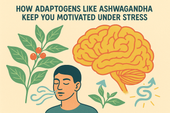
How Adaptogens Like Ashwagandha Keep You Motivated Under Stress
Feeling overwhelmed and unmotivated? 🌿 Discover how adaptogens like Ashwagandha can help you stay centered, focused, and energized under stress. Learn how supplements, breathwork, and therapy work together to restore your natural motivation and help you thrive — even during life’s toughest moments. 💪✨
-
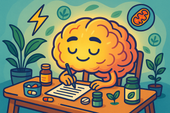
Supplements That Support Long-Term Productivity Without the Crash ⚡🌿
Cortisol — your body’s main stress hormone — can be both your best friend and worst enemy. ⚡ When balanced, it keeps you focused, energized, and ready to act. But when it stays high for too long, it leads to fatigue, anxiety, and emotional crashes. Learn how to regulate cortisol naturally through supplements, sleep, and stress management to maintain calm, steady productivity. 🌿
-
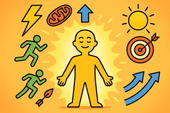
Why Energy Levels and Motivation Go Hand in Hand ⚡🧠
B-vitamins are the brain’s spark plugs 🔋. They turn food into fuel, support neurotransmitter production, and keep your mood, energy, and focus balanced. Learn how vitamins like B6, B9, and B12 work together to power the nervous system, reduce fatigue, and keep motivation high. 🌿
-
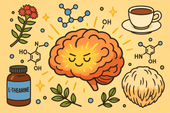
The Science of Motivation: Can Nootropics Help You Stay Focused? 🧠⚡
Nootropics are nature’s tools for sharper thinking and sustainable focus 🧠🌿. From Rhodiola and Lion’s Mane to L-theanine and Bacopa, these brain-boosting compounds enhance motivation, memory, and stress resilience. Learn the science behind how nootropics work — and how to use them safely for peak mental performance and clarity. ⚡
-
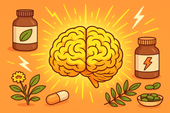
How Natural Supplements Can Boost Your Daily Drive
Cortisol is your body’s main stress hormone — powerful, necessary, but often misunderstood. ⚡ When balanced, it keeps you alert and energized; when chronically elevated, it drains mood, motivation, and focus. Learn how to regulate cortisol naturally through nutrition, supplements, and calming lifestyle habits for steady energy and emotional balance. 🌿
-
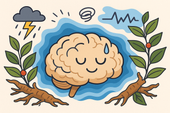
Ashwagandha for Stress and Low Mood
Breathwork is more than a relaxation tool — it’s a way to rewire your nervous system. 🌬️ Through intentional breathing, you can reduce stress hormones, improve focus, and calm emotional turbulence. This guide explores the science of breathwork and its powerful effects on mental clarity, resilience, and emotional regulation. 🌿
-
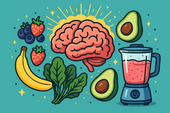
Mood-Boosting Smoothie Recipes
Your blood sugar affects far more than energy — it influences mood, focus, and emotional stability too 🍎. Learn how maintaining balanced glucose levels supports brain health, reduces anxiety, and prevents emotional crashes. Discover the foods and habits that keep your mind calm and your energy steady throughout the day. 🌿
-
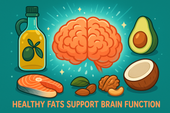
How Healthy Fats Support Brain Function
Your brain thrives on healthy fats 🧠💧. From omega-3s to MCTs, the right fats enhance focus, memory, and mood while protecting against inflammation and aging. This article explores how good fats — like those from olive oil, salmon, avocado, and nuts — build sharper thinking, emotional balance, and lasting brain vitality. 🌿
-
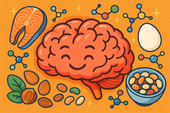
The Role of Protein in Mental Clarity
Protein isn’t just for muscles — it’s for your mind. 🧠 This guide explores how amino acids from high-quality protein fuel neurotransmitters, stabilize mood, and sharpen focus. Learn how balanced protein intake supports dopamine, serotonin, and energy regulation to boost mental clarity and emotional stability naturally. 🍳🌿
-
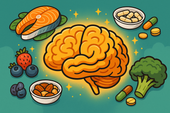
Nutrients That Support Emotional Stability
Your emotions are built from nutrients as much as from thoughts 🌿. This science-backed guide reveals the vitamins, minerals, and healthy fats that stabilize mood and reduce stress — from B-vitamins and magnesium to omega-3s and probiotics. Learn how balanced nutrition supports neurotransmitters, strengthens resilience, and promotes lasting calm and clarity 🧠✨.
-
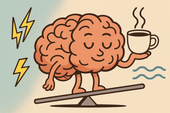
How Caffeine Affects Your Mood ☕
Your morning coffee might lift your spirits — but what’s really happening inside your brain? ☕ This in-depth guide explores how caffeine affects mood, motivation, dopamine, and stress. Learn how to enjoy caffeine mindfully without triggering anxiety, burnout, or emotional crashes. Discover the science behind your energy highs and lows — and how to find calm, sustainable focus. 🌿
-
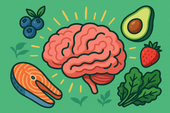
The Best Anti-Inflammatory Diet for Mental Health
Inflammation doesn’t just affect your body — it impacts your mood, focus, and emotional resilience too 🌿. This comprehensive guide reveals how an anti-inflammatory diet can support mental health by reducing neuroinflammation, balancing gut bacteria, and stabilizing blood sugar. Learn which foods to eat (and which to avoid) to protect your brain, boost serotonin, and promote lasting calm. 🧠✨
-
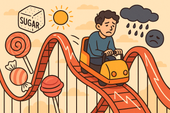
Why Sugar Spikes Can Worsen Depression
Sugar highs can make you feel good for a moment — but what comes next can fuel emotional crashes and deepen depression 🍭. This article explains how blood sugar spikes disrupt brain chemistry, increase inflammation, and destabilize serotonin. Learn how food, supplements, breathwork, and therapy can help you break the sugar–mood cycle and restore lasting emotional balance 🌿.
-
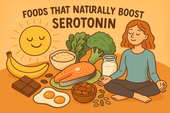
Foods That Naturally Boost Serotonin
Serotonin isn’t just a brain chemical — it’s your body’s built-in mood stabilizer 🌞. This in-depth guide explores how natural foods like salmon, eggs, bananas, and dark chocolate can elevate serotonin levels, while gut health, key nutrients, supplements, breathwork, and therapy create the perfect synergy for calm and emotional balance. Learn how to support your mind through diet, lifestyle, and mindset — naturally. 🌿
-
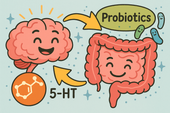
Probiotics for Mood Balance
-
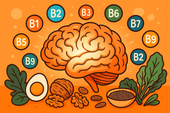
B-Vitamins and Their Role in Mental Health
Methylation is one of your body’s most important biochemical processes — influencing mood, energy, and focus. Powered by B-vitamins like B6, B9, and B12, it helps your brain create serotonin, detox efficiently, and maintain emotional balance. 🌿
-
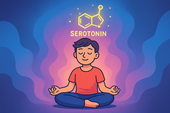
5-HTP for Serotonin Support
Calm isn’t just an emotion — it’s a physiological state where your body and mind finally sync in peace. By slowing your breath, softening your thoughts, and creating safety within, you restore the deep relaxation your nervous system craves. 🌿
-
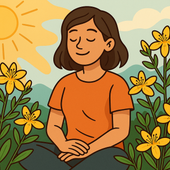
St. John’s Wort for Mild Depression
Antidepressants can be life-changing for many — but understanding how they work and what natural options like St. John’s Wort can complement them is key. Learn how both approaches affect brain chemistry, mood balance, and long-term emotional wellness. 🌿
-
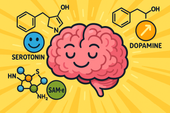
SAM-e: A Natural Mood Booster
Emotional regulation is the art of staying calm and grounded, even when life feels chaotic. By balancing your brain, body, and breath, you can respond with clarity instead of reacting from stress — building real emotional resilience and inner peace. 🌿
-

Rhodiola Rosea for Emotional Resilience
Neuroplasticity is your brain’s ability to grow, adapt, and heal — even after stress or trauma. Every thought, emotion, and habit reshapes your neural pathways, helping you build stronger emotional resilience, sharper focus, and lasting mental balance. 🌿
-
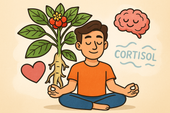
Ashwagandha for Stress and Low Mood
Adaptogens are nature’s stress balancers — powerful herbs like ashwagandha, rhodiola, and reishi that help your body adapt to tension, fatigue, and change. By regulating cortisol and supporting your nervous system, they build calm focus and emotional resilience from the inside out. 🌙
-
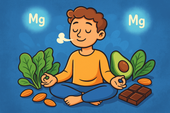
Magnesium’s Role in Emotional Regulation
Neuroscience helps us understand why we feel, think, and react the way we do. From brain chemistry and neural circuits to stress responses and emotional learning, the science of the brain reveals how our minds can heal, grow, and find balance. 🌿
-
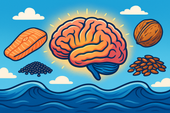
Omega-3 Fatty Acids and Emotional Well-Being
Nutrients aren’t just fuel — they’re communication signals that tell your brain and body how to function. From magnesium and vitamin D to omega-3s and B vitamins, the right mix of nutrients helps calm your mind, balance hormones, and support emotional and physical well-being. 🌙
-
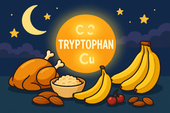
The Role of Tryptophan in Sleep Health
Mental health isn’t just the absence of illness — it’s the foundation of calm, focus, and emotional resilience. From managing stress and anxiety to nurturing self-compassion, understanding your mental well-being is the first step toward a balanced, more peaceful life. 🌿
-

Nutrients That Promote Nighttime Relaxation
Potassium does more than balance fluids — it also helps your body and mind relax at night. By calming nerves, reducing muscle tension, and supporting steady heart rhythm, potassium-rich foods like bananas, sweet potatoes, and coconut water can promote deeper, more restful sleep. 🌙
-
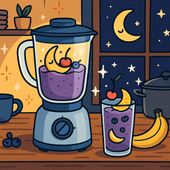
Sleep-Friendly Smoothie Recipes
Melatonin is your body’s natural sleep signal — a hormone that tells your brain when it’s time to rest. Learn how melatonin works, which foods and habits boost its production, and how to use it wisely for deeper, more restorative sleep without dependence. 💤
-
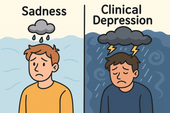
The Difference Between Sadness and Clinical Depression
Your emotions aren’t just in your mind — they’re written in your brain chemistry. Serotonin, dopamine, and GABA work together to regulate mood, motivation, and calm. When they fall out of balance, you may feel anxious, fatigued, or low. Learn how these brain chemicals influence your mental health and what you can do to restore harmony naturally. 🌿
-
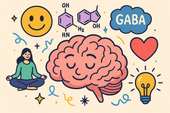
How Brain Chemistry Influences Mood
Your brain is a symphony of neurotransmitters — serotonin, dopamine, GABA, and more — working together to shape how you think and feel. When they’re balanced, you experience calm focus and emotional stability. When they’re not, mood swings and fatigue can follow. Learn how to naturally support these vital messengers for better mood and mental clarity. 🌿
-
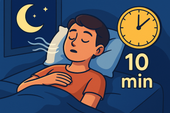
How to Fall Asleep in Under 10 Minutes
The military knows a few secrets about falling asleep fast — and they work even in chaos. This article explores the science behind rapid relaxation, including the famous “Military Sleep Method,” which teaches your body to shut down stress and rest on command. Learn how discipline, breath, and focus can help anyone fall asleep in minutes. 🌙
-
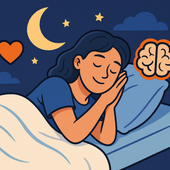
Why Emotional Resilience Improves Sleep
Emotional resilience isn’t just about mental strength—it’s also a key ingredient for better sleep. When your emotions are balanced, your body releases fewer stress hormones, your mind quiets faster, and your sleep becomes deeper and more restorative. Learn how to cultivate calm through mindset, breathwork, and daily habits. 🌙
-
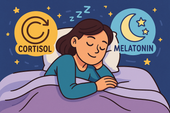
The Connection Between Stress Hormones and Sleep
Chronic stress can quietly reshape your body’s chemistry, raising cortisol, disrupting sleep, and draining your energy. This guide explores how long-term stress affects your nervous system, hormones, and rest—and how to restore calm through breathwork, nutrition, and daily recovery rituals. 🌿
-

How Shift Workers Can Improve Sleep Quality
For shift workers, caffeine can be both a lifeline and a sleep disruptor. Learn how to use it strategically—boosting alertness during work hours without sabotaging rest. This guide explores timing, dosage, and smarter natural alternatives to keep your energy steady and your sleep restorative. 🌙
-
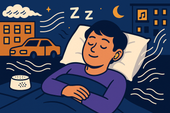
How to Sleep Better in a Noisy Environment
Living in a noisy area doesn’t mean sacrificing your rest. Learn practical and natural strategies to sleep better in loud environments—from using sound masking and breathwork to creating calming rituals that help your brain tune out the chaos. Find inner silence even when the world outside won’t quiet down. 🌙
-
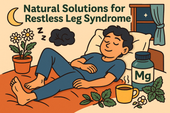
Natural Solutions for Restless Leg Syndrome (RLS)
Struggling to sleep deeply and wake refreshed? This soothing guide explores how the body restores itself during quality sleep—and how to support it naturally. Learn about the science of rest, the role of nutrients, and the rituals that promote deep, uninterrupted slumber. 🌙
-
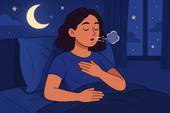
How to Overcome Middle-of-the-Night Anxiety
Middle-of-the-night anxiety can make even the calmest mind spiral into worry. This guide reveals practical, evidence-based techniques to help you stop the 3 A.M. overthinking loop—from breathwork and journaling to herbal supplements and therapy-based tools. Learn to retrain your nervous system and find peace when the world is asleep. 🌙
-
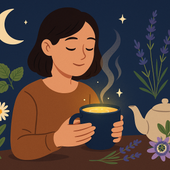
The Perfect Evening Herbal Blend
Discover the calming power of nature in your teacup. The perfect evening herbal blend combines chamomile, lemon balm, lavender, and adaptogens like ashwagandha to relax your body and quiet your mind before bed. Learn how to craft and customize a soothing, sleep-enhancing tea ritual that helps you unwind, restore, and wake up refreshed. 🌙
-
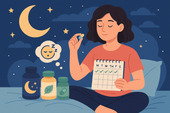
How to Cycle Sleep Supplements for Maximum Effectiveness
Wondering why your sleep supplements stop working after a while? This guide breaks down how to cycle sleep aids like melatonin, magnesium, and ashwagandha for consistent, long-term results. Learn when to rest your body, how to prevent tolerance, and what natural methods—like breathwork and therapy—enhance your sleep cycles. 🌙
-
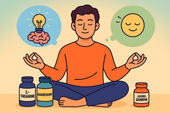
The Best Supplements for Both Relaxation and Focus
Calm your mind and sharpen your focus with the perfect blend of natural supplements. From L-theanine and magnesium to Rhodiola and Lion’s Mane, this science-based guide shows how to achieve relaxation and clarity at the same time. Discover stacks that support your nervous system, balance mood, and keep your mind laser-focused without the crash. 🌿
-

How to Sleep Better During Travel
Traveling can be thrilling—but sleepless nights can ruin even the best trips. From supplements like magnesium and melatonin to soothing breathwork and therapy-based techniques, this guide shows you how to sleep deeply on planes, in hotels, or across time zones. Learn to calm your body, reset your circadian rhythm, and build rest rituals that work anywhere in the world 🌙
-
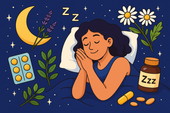
Improving Sleep in Menopause with Supplements
Menopause can make peaceful sleep feel impossible — but balance is within reach 🌿. This article explores how supplements like magnesium, ashwagandha, and black cohosh can ease night sweats, calm the mind, and restore your natural sleep rhythm during hormonal changes.
-
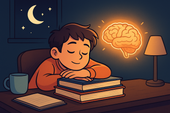
Sleep Support for Students During Exams
Exam stress can make it hard to rest — but sleep is what helps you perform your best 💤. This article explains how to improve sleep quality during exams through better study habits, natural supplements, breathwork, and therapy tools to calm the mind and sharpen focus.
-

Rest Strategies for Entrepreneurs
Entrepreneurs often burn out chasing their vision — but rest is the real fuel for success 🌙. This article explores science-backed recovery strategies for founders, including sleep, breathwork, therapy, and nutrition techniques that sharpen creativity and sustain performance.
-

How Sleep Affects Athletic Recovery
Sleep is where strength is built. 💤 This article explores how deep sleep drives muscle recovery, hormonal balance, and athletic performance — plus how supplements like magnesium, melatonin, and ashwagandha can enhance overnight repair and boost training results.
-

Better Sleep for People with Chronic Pain
Living with chronic pain makes sleep feel impossible — but it’s not. 🌙 This article explores how pain disrupts rest and how to rebuild your sleep through gentle breathwork, calming nutrition, therapy, and supplements that help your body relax and heal.
-

How to Sleep Better During Seasonal Changes
Seasonal shifts can throw your sleep off balance 🌦️. This article explains how light, temperature, and hormones change with the seasons — and how to restore your rhythm naturally through melatonin-supportive foods, breathwork, and therapy for emotional balance.
-

Foods That Naturally Boost Melatonin
Want to fall asleep faster without supplements? 🌙 This article explores how foods like tart cherries, pistachios, and kiwi naturally boost melatonin, the hormone that regulates sleep. Learn how to build an evening meal plan — plus simple rituals like breathwork and herbal tea — to improve rest and reset your circadian rhythm.
-

Lavender Extract and Its Calming Effects
Lavender extract is one of nature’s most soothing remedies 🌸. This article explores how lavender calms the nervous system, lowers cortisol, and improves sleep — plus how to combine it with magnesium, breathwork, and therapy for deep relaxation and emotional balance.

















































